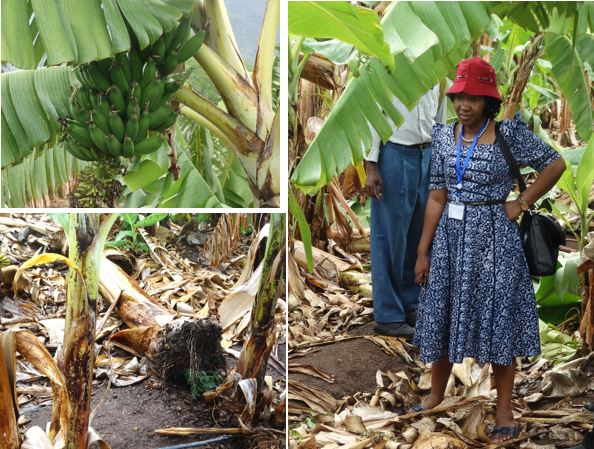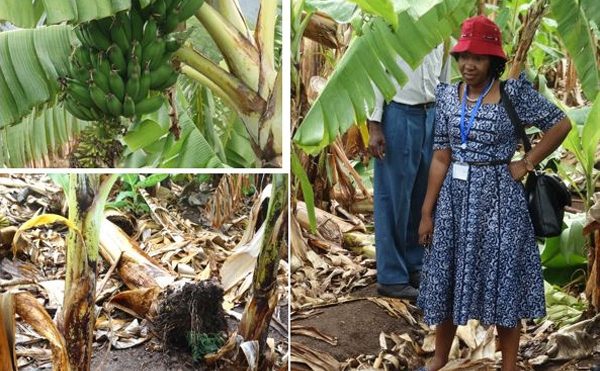A major threat to small-scale banana production in Tanzania is the damage to crops by nematodes, parasites which inhabit the soil and invade plant roots. The damage they cause weakens the plant and can lead to collapse. If this collapse occurs when the plants are in fruit, the loss is total, and such infestations can have devastating economic consequences.
The Banana Nematode Baseline Project (BNBP) has already achieved meaningful results in understanding the damage done by these destructive root parasites. These results were presented at the project’s second annual meeting in January 2017 in Morogoro, Tanzania.
The Tanzanian banana

As a first step, Tanzanian banana cultivars have been genotyped, providing new insight into the varieties being grown. It is now clear that the same genotype grown in different areas can be called by different common names, a finding which has important implications for breeding programmes. This is the first time such a genotyping study has been done in Tanzania, and is a valuable starting point for investigations of the nematode problem.
Know your nematodes
The project is also using molecular and morphometric techniques to identify and evaluate species of nematodes in root and soil samples. Early indications are that the most abundant species of concern belong to the genera Radophilus and Pratylenchus – which are known to cause lesions and necrosis within roots. Other nematode species such as Helicotylenchus and Melodoigyne may be less of a threat. Socio-economic data are also currently being evaluated and will be reported later this year.
Using the findings
Although much work remains to be done, the research by Dr Luambano’s team offers a range of benefits to agricultural scientists, nematologists, social scientists and policymakers:
- Knowing which plant varieties are most vulnerable to nematode attack means that more resistant varieties can be developed by crop scientists.
- Knowing which varieties are most vulnerable can also help growers decide what to plant so as to minimise their crop losses.
- Knowing what nematodes are most damaging can help to formulate focused or integrated pest-management strategies – phyto-sanitation, economic support and biological control – to reduce the impact of these organisms.
- Knowing the nematode distribution in the various areas of Tanzania will add to existing information about these organisms and benefit nematologists world-wide.
Project support
This project is supported by the Bill & Melinda Gates Foundation under the Program for Emerging Agricultural Research Leaders (PEARL) and comprises biologists, trained technical staff and volunteers. It is based at the Sugarcane Research Institute, Kibaha, Tanzania. Here Dr Nessie Luambano has used her award to upgrade her laboratory with state-of-the-art equipment, fund the molecular training of her PhD student at the University of North Carolina, and pay for technical staff and volunteers. Dr Luambano has also formed collaborations with other Tanzanian institutions, such as Mikocheni Agricultural Research Institute (MARI), to access resources not available at her laboratory.

